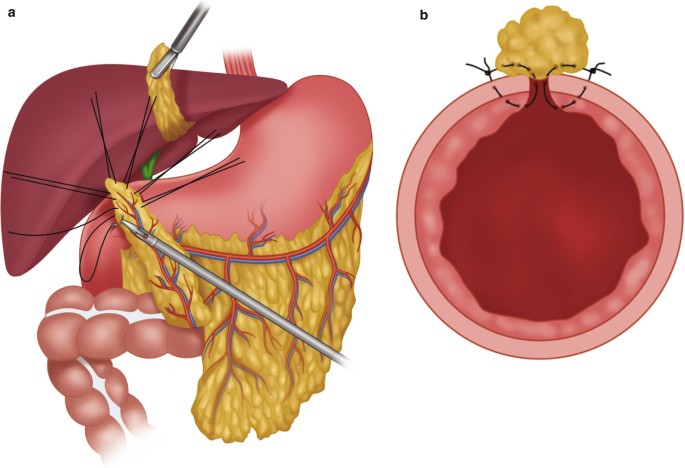What is Perforation Closure with Omental Patch?

Symptoms of Gastrointestinal Perforation
A GI perforation may present with sudden, intense symptoms such as:
- Severe abdominal pain, often spreading across the abdomen
- Fever and chills
- Nausea and vomiting
- Distension or bloating
- Rigid or tender abdomen
- Rapid heartbeat and low blood pressure
- Signs of shock in severe cases
These symptoms typically occur suddenly and worsen quickly. Emergency medical attention is crucial.
Procedure: Omental Patch Repair
Preoperative Evaluation:
Diagnosis is confirmed using X-rays, CT scans, and blood tests
Stabilization with IV fluids, antibiotics, and pain management
Nasogastric tube insertion to decompress the stomach
Surgical Steps:
A laparotomy (open surgery) or laparoscopy (minimally invasive surgery) is performed.
The perforation site is identified—commonly in the stomach or duodenum.
A healthy segment of omentum is mobilized.
The omental patch is secured over the perforation using sutures.
The abdominal cavity is cleaned (peritoneal lavage) to prevent infection.
Drains may be placed, and the abdomen is closed.
Postoperative Care:
Monitoring in the ICU or surgical ward
Antibiotic therapy
Gradual return to oral feeding
Management of underlying causes like ulcers or infections
Prevention of Gastrointestinal Perforation
While some causes of GI perforation may be sudden and unavoidable, many cases can be prevented by managing underlying risk factors:
- Avoid prolonged use of NSAIDs or steroids
- Limit alcohol and tobacco use
- Treat Helicobacter pylori infections promptly
- Manage peptic ulcer disease effectively
- Adopt a balanced, ulcer-friendly diet
- Seek early treatment for abdominal symptoms
Benefits of Omental Patch Surgery
- Life-saving procedure in cases of perforated ulcers
- Effective sealing of perforation with reduced leakage
- Promotes healing due to the omentum’s rich blood supply
- Reduces risk of peritonitis and sepsis
- Minimally invasive options available in selected patients
- Faster recovery and reduced hospital stay with laparoscopic approach
Types of Omental Patch Techniques
There are a few variations of the omental patch method, depending on the location and size of the perforation:
- Graham’s Omental Patch: The classic method, commonly used for duodenal ulcers.
- Pedicled Omental Patch: Uses a vascularized omental flap for better blood supply.
- Free Omental Graft: Small pieces of omentum are sutured to cover larger or irregular defects.
- Laparoscopic Omental Patch Repair: A minimally invasive alternative, suitable for stable patients with small perforations.
